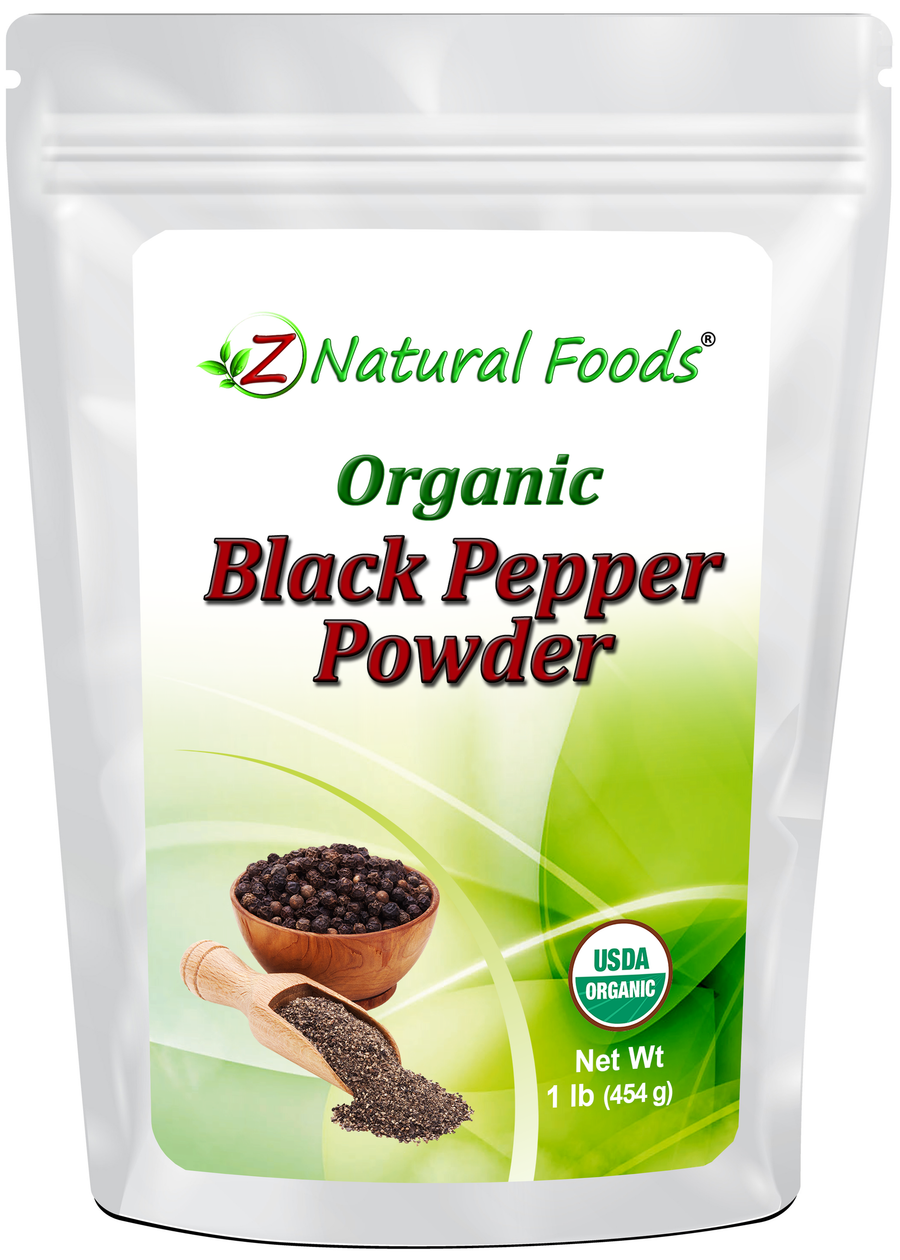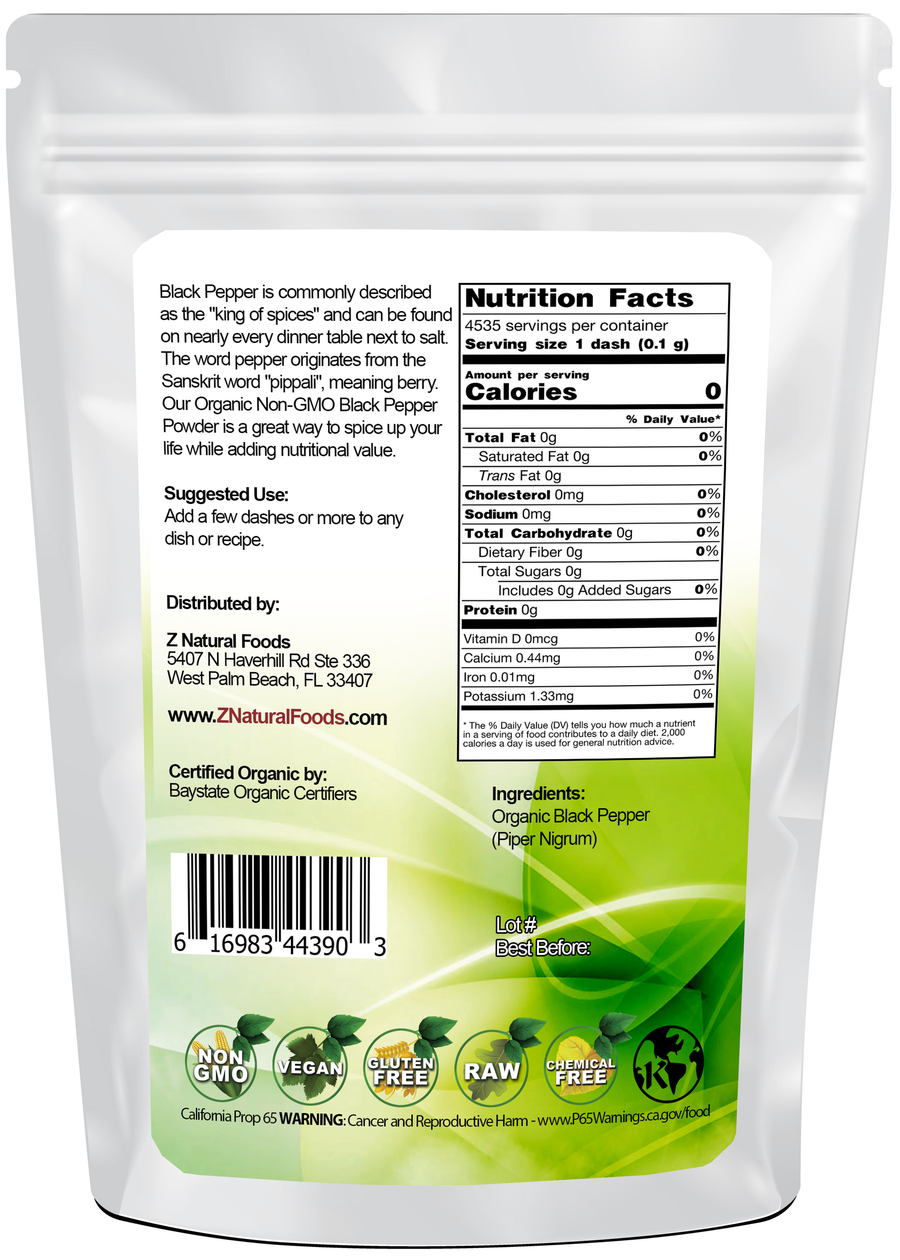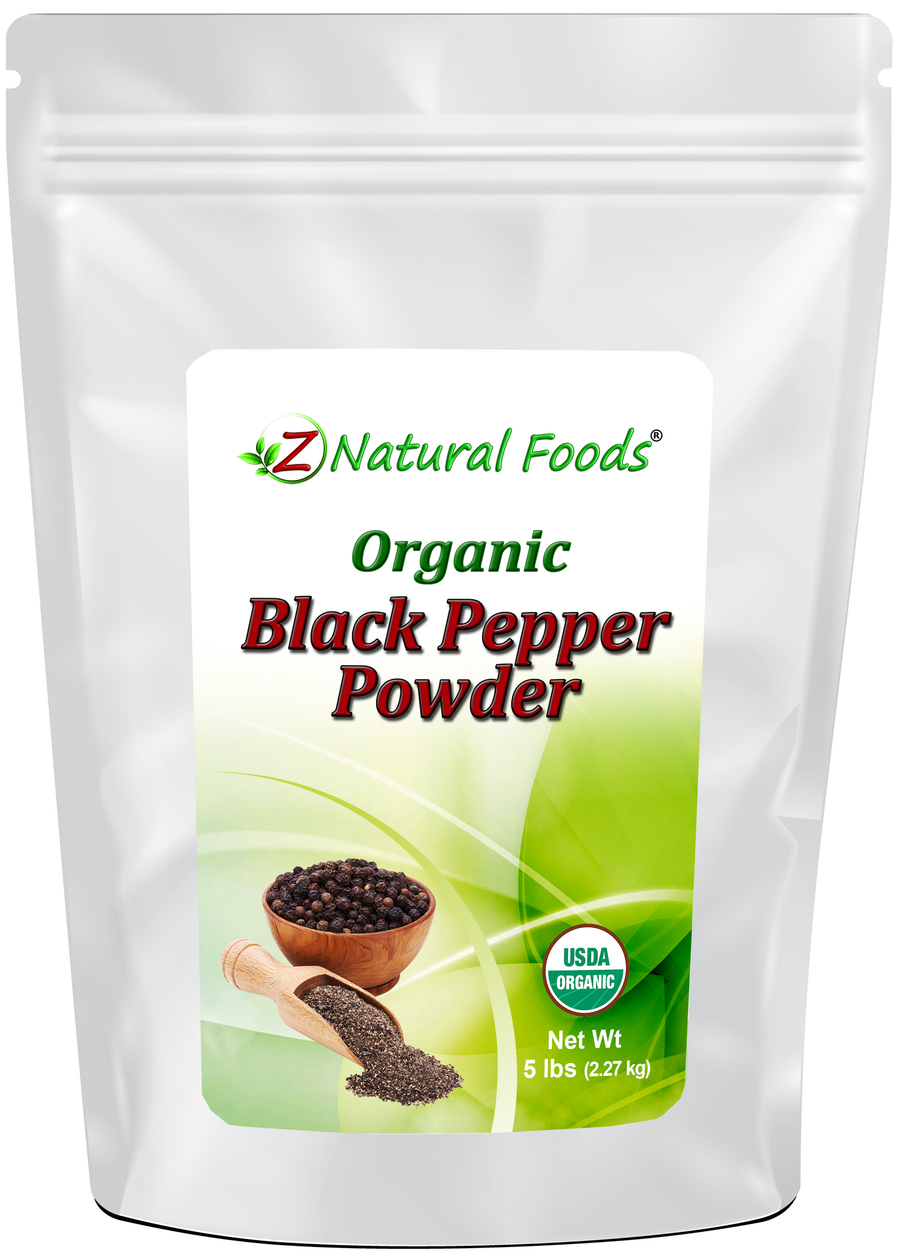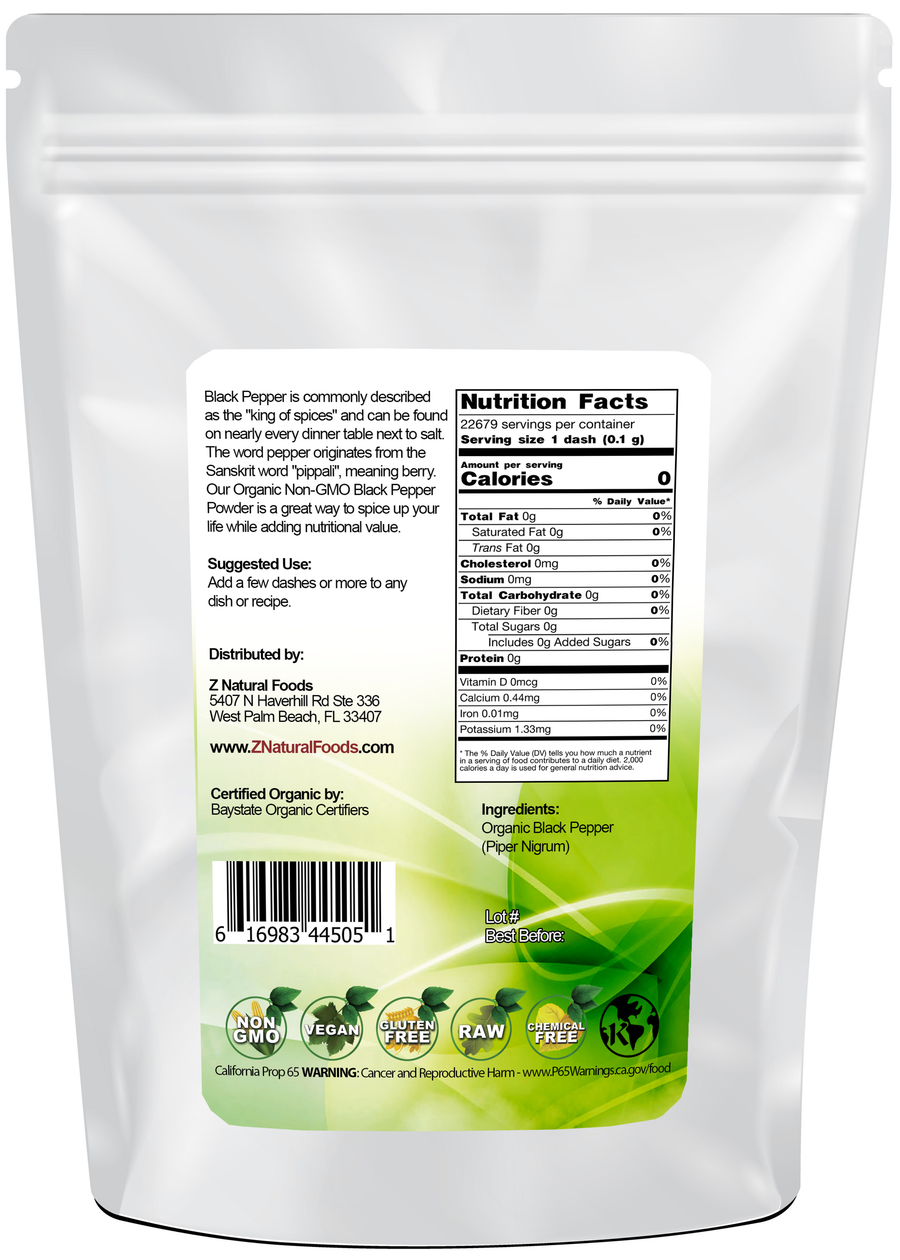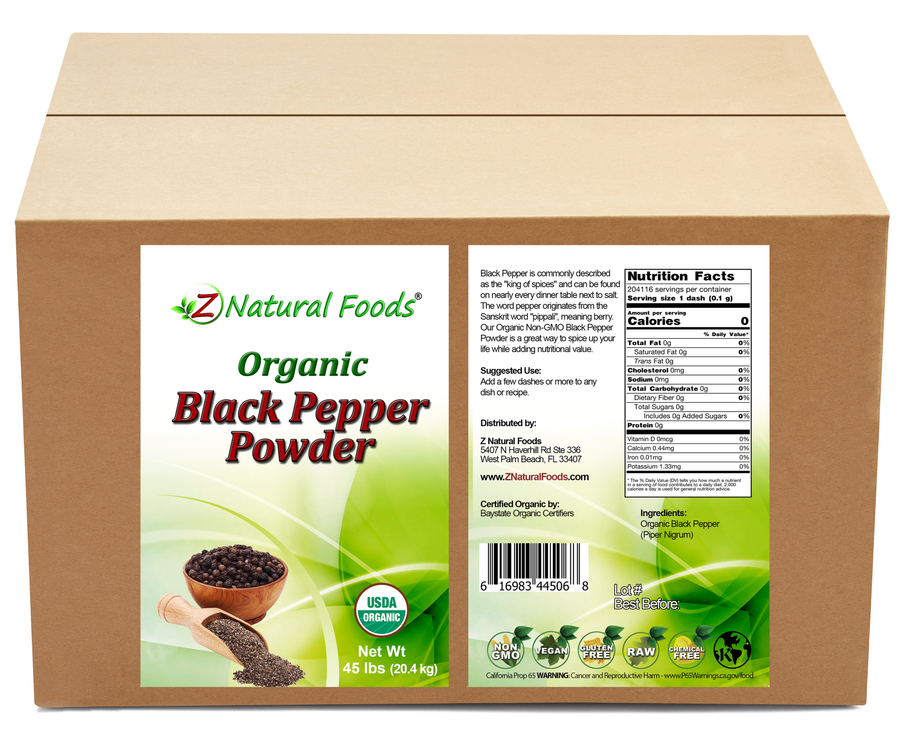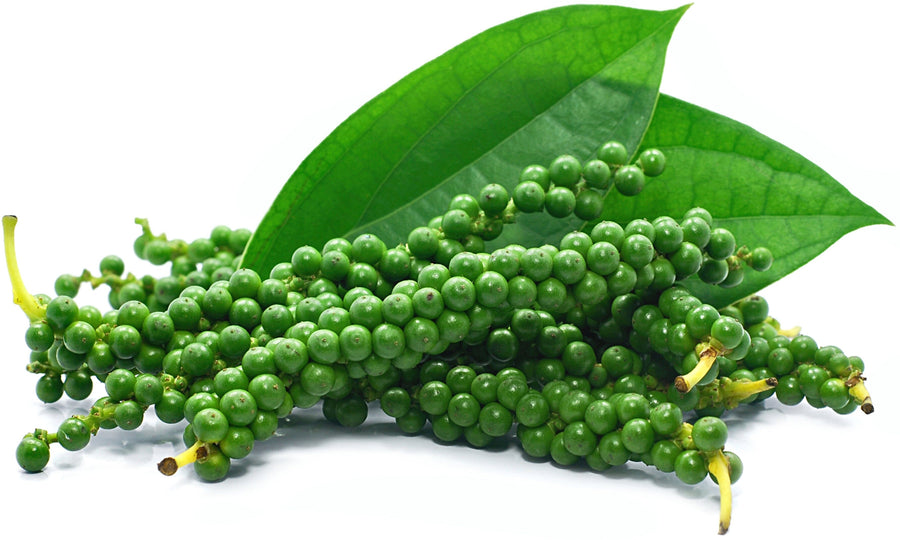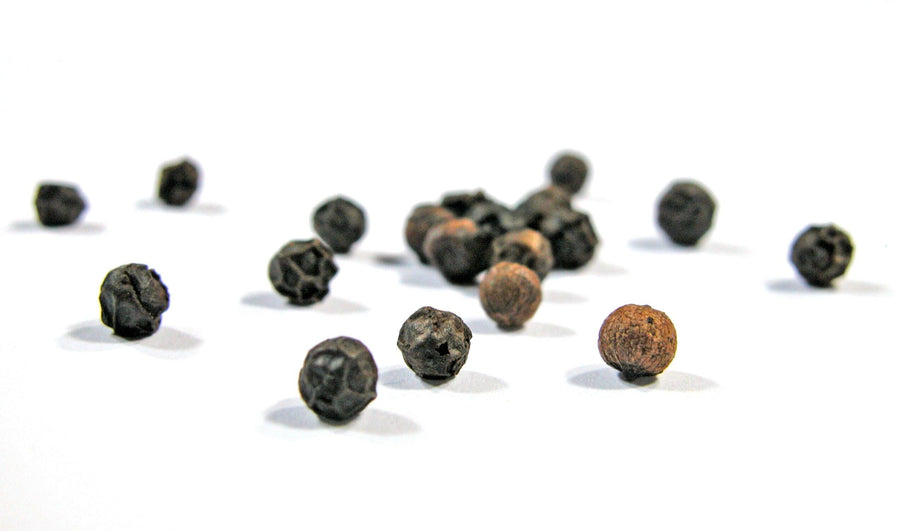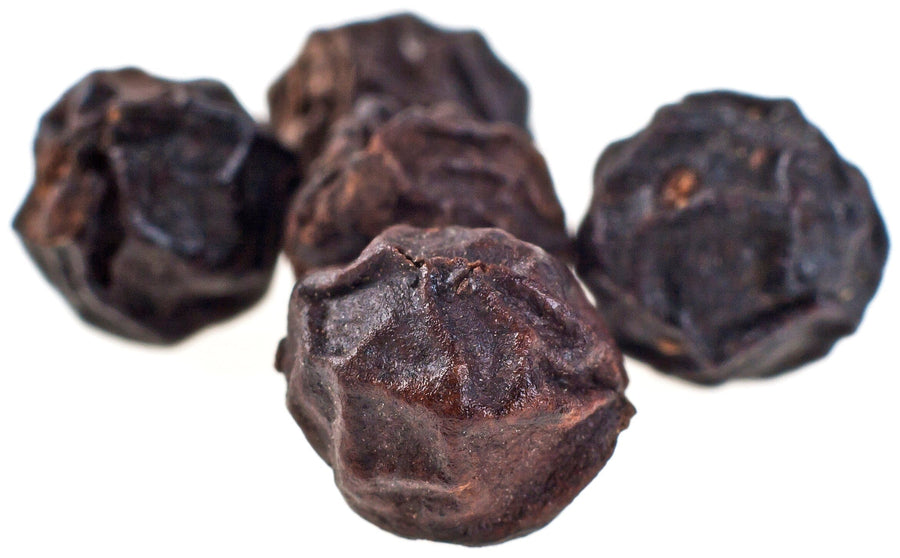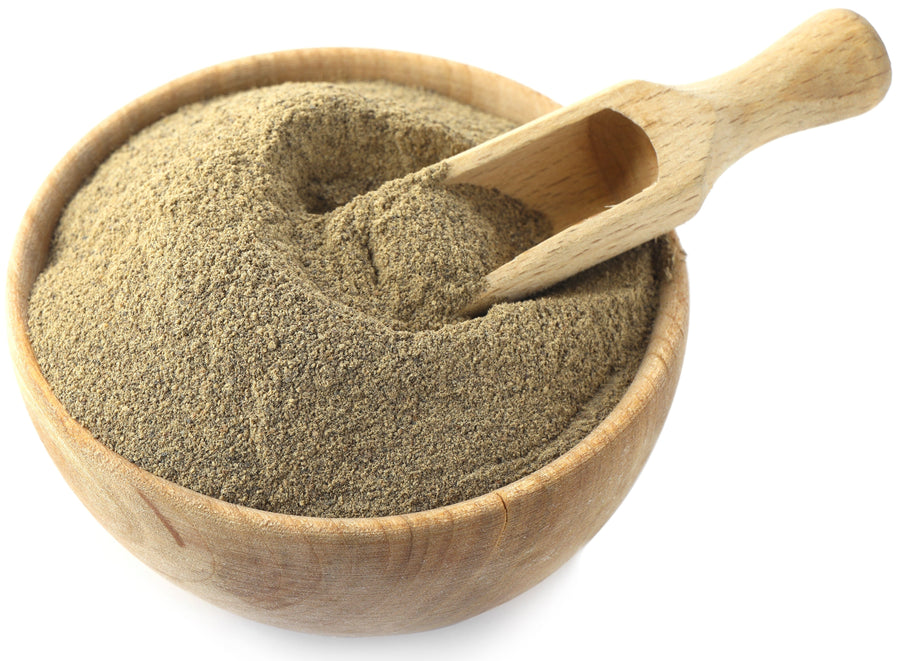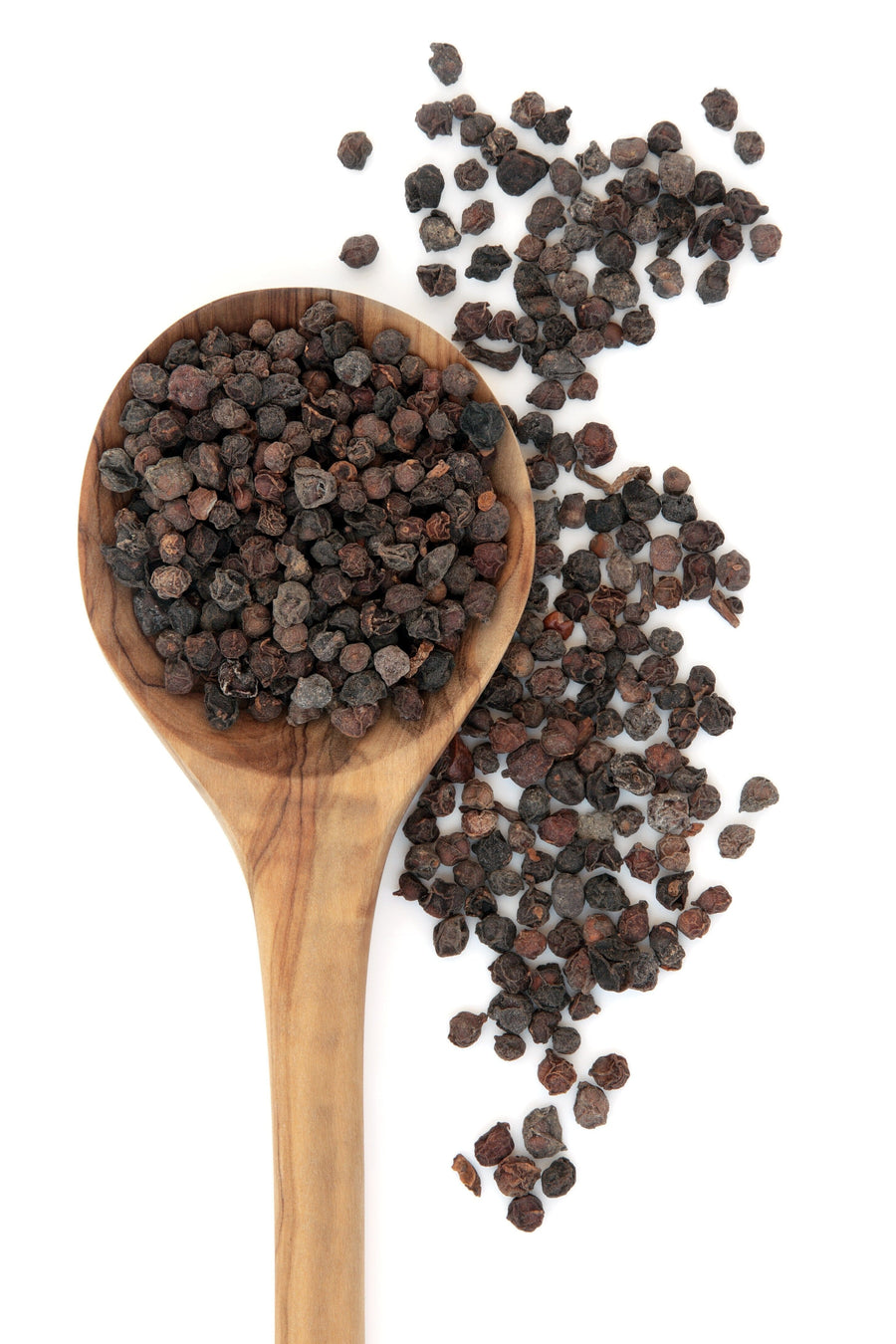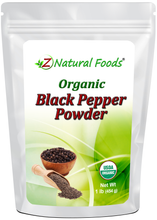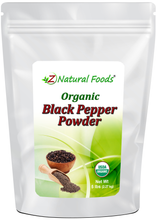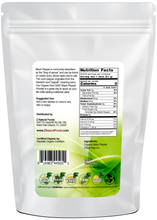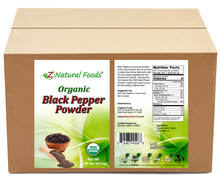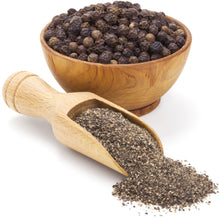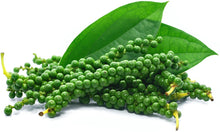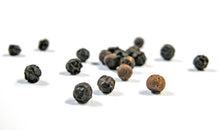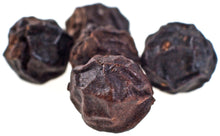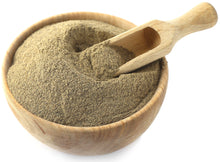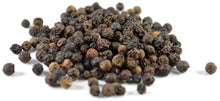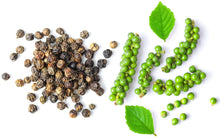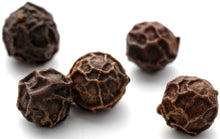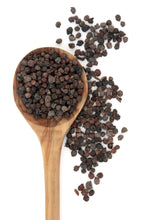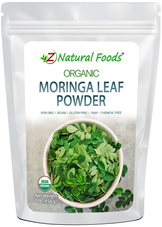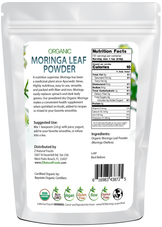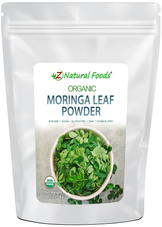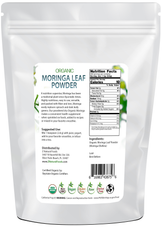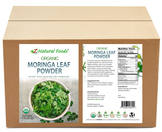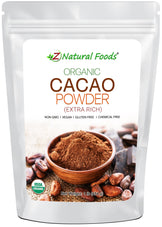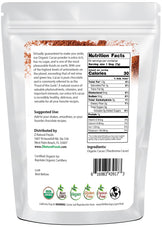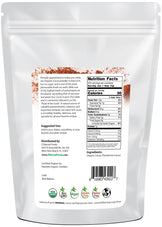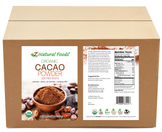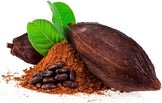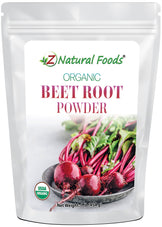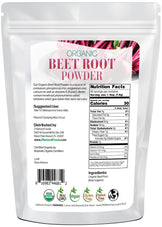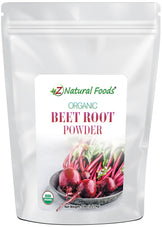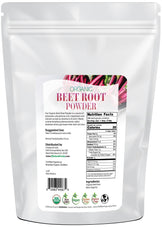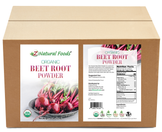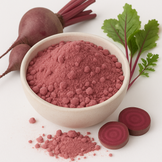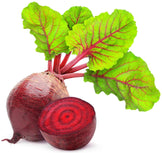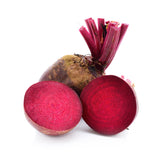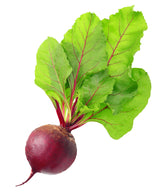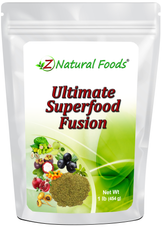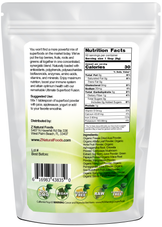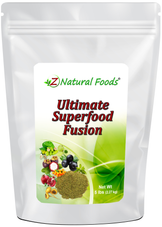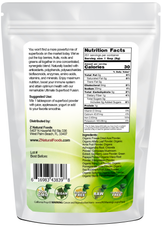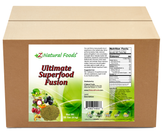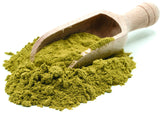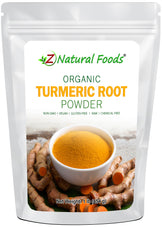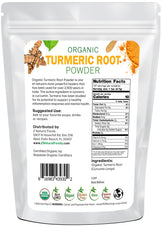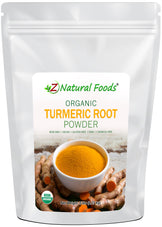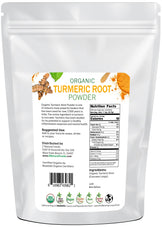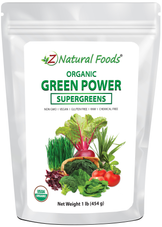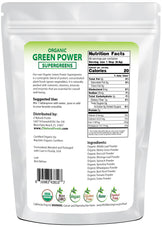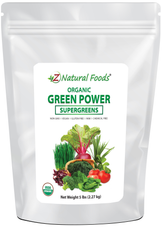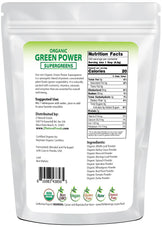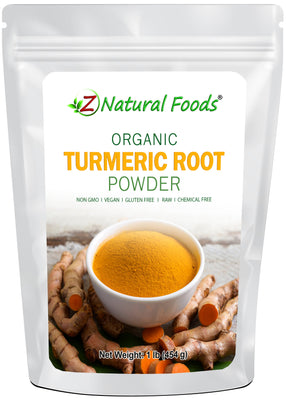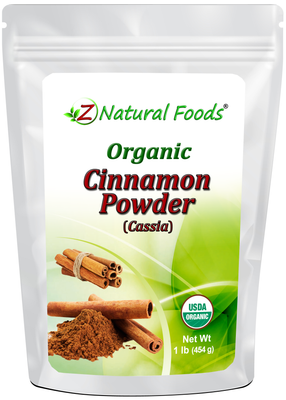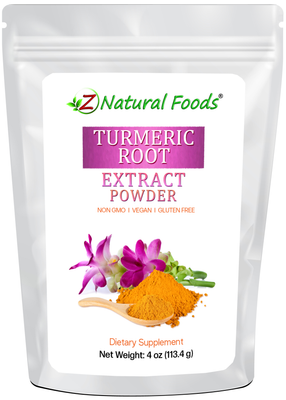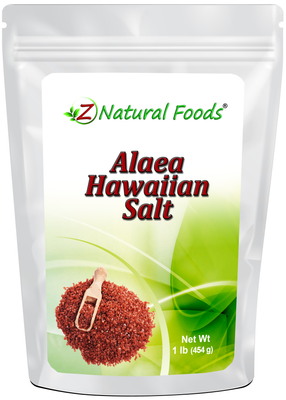About Product
Black Pepper Powder
Bring bold, aromatic flavor to your cooking with premium black pepper powder. Sourced from carefully cultivated peppercorns, this versatile spice adds a warm, pungent taste that enhances both everyday meals and gourmet dishes.
Often called the “king of spices,” black pepper is a kitchen essential found in cuisines around the world. Ground from sun-dried peppercorns, it delivers a sharp, savory bite that pairs perfectly with meats, vegetables, soups, sauces, and more.
Whether you’re seasoning at the stove or sprinkling at the table, black pepper powder is the classic companion to salt and a must-have for every spice rack.
Some research suggests that Black Pepper may contain the following constituents:
- Minerals: Magnesium, Selenium, Zinc, Phosphorus, Manganese, Copper
- Vitamins: Thiamin, Vitamin B-6, Riboflavin, Niacin, Pantothenic Acid, Folate (DFE), Vitamin A (IU), Vitamin A (RAE), Choline, Betaine, Vitamin K (phylloquinone), Beta Carotene, Alpha Carotene, Beta Cryptoxanthin, Vitamin E (alpha-tocopherol), Lycopene, Lutein & Zeaxanthin, Tocopherol, gamma
- Lipids: Phytosterols
- Amino Acids: Tryptophan, Threonine, Isoleucine, Leucine, Lysine, Methionine, Cystine, Phenylalanine, Tyrosine, Valine, Arginine, Histidine, Alanine, Aspartic Acid, Glutamic Acid, Glycine, Proline, Serine
- Piperine, Piperonal
Suggested Use: Add a dash to any food, soups, or sauce.
Botanical Name: Piper nigrum.
Other Names: Black Pepper, Blanc Poivre, Extrait de Poivre, Grain de Poivre, Hu Jiao, Kali Mirchi, Kosho, Krishna, Marich, Maricha, Pepe, Pepper, Pepper Extract, Pepper Plant, Peppercorn, Pfeffer, Pimenta, Pimienta, Pimienta Negra y Pimienta Blanca, Piper, Piper nigrum, Piperine, Poivre, Poivre Noir, Poivre Noir et Blanc, Poivre Noir et Poivre Blanc, Poivrier, Vellaja, White Pepper.
Parts Used: Whole Fruit.
Ingredients: Raw Black Pepper.
Origin: Grown and dried in Indonesia. Packaged with care in Florida, USA.
Certifications: Certified USDA Organic.
How to Maintain Optimum Freshness
- This product is packaged in airtight stand-up, resealable foil pouches for optimum freshness.
- Once opened, push the air out of the pouch before resealing it to preserve maximum potency.
- Keep your powder in a cool, dark, dry place.
This product is 100% natural and minimally processed:
Taste, smell, texture, and color vary from batch to batch. Go here to learn why our products may naturally vary.
The important protections we take to bring you safe and nutritious superfoods:
Please go here to discover the essential steps we take to deliver fresh, quality nutrition.
Bulk Quantities?
Need to order a large quantity of our products? We are happy to help! Please get in touch with our Bulk department to discuss the details.
* Product packaging, pictures, and origin may vary.
Sources & References
1. Abila B, Richens A, Davies JA. Anticonvulsant effects of extracts of the west African black pepper, Piper guineense. J Ethnopharmacol 1993 Jun;39(2):113-7. 1993. PMID:16400.
2. http://www.ncbi.nlm.nih.gov/pubmed/25554982
3. http://www.whfoods.com/genpage.php?tname=foodspice&dbid=74#nutritionalprofile
4. http://www.ncbi.nlm.nih.gov/pubmed/25541091
5. Wood, Rebecca. The Whole Foods Encyclopedia. New York, NY: Prentice-Hall Press; 1988. 1988. PMID:15220.
6. http://www.ncbi.nlm.nih.gov/pubmed/25479727
7. Murray MT. The Healing Power of Foods. Prima Publishing, Rocklin, CA, 1993, pp. 211-212. 1993.
8. http://www.ncbi.nlm.nih.gov/pubmed/25446579
9. Mujumdar AM, Dhuley JN, Deshmukh VK, et al. Anti-inflammatory activity of piperine. Jpn J Med Sci Biol 1990 Jun;43(3):95-100. 1990. PMID:16380.
10. http://www.ncbi.nlm.nih.gov/pubmed/25444919
11. Fortin, Francois, Editorial Director. The Visual Foods Encyclopedia. Macmillan, New York. 1996.
12. http://www.ncbi.nlm.nih.gov/pubmed/25438036
13. Grieve M. A Modern Herbal. Dover Publications, New York. 1971.
14. http://www.ncbi.nlm.nih.gov/pubmed/25384161
15. Grieve M. A Modern Herbal. Dover Publications, New York. 1971.
16. http://www.ncbi.nlm.nih.gov/pubmed/25375334
17. Ensminger AH, Esminger M. K. J. e. al. Food for Health: A Nutrition Encyclopedia. Clovis, California: Pegus Press; 1986. 1986. PMID:15210.
18. http://www.ncbi.nlm.nih.gov/pubmed/25331343
19. Ensminger AH, Ensminger, ME, Kondale JE, Robson JRK. Foods & Nutriton Encyclopedia. Pegus Press, Clovis, California. 1983.
20. http://www.ncbi.nlm.nih.gov/pubmed/25327968
21. Dorman HJ, Deans SG. Antimicrobial agents from plants: antibacterial activity of plant volatile oils. J Appl Microbiol 2000 Feb;88(2):308-16. 2000. PMID:16390.
22. http://www.ncbi.nlm.nih.gov/pubmed/25173461
23. Calucci L, Pinzino C, Zandomeneghi M et al. Effects of gamma-irradiation on the free radical and antioxidant contents in nine aromatic herbs and spices. J Agric Food Chem 2003 Feb 12; 51(4):927-34. 2003.
24. http://www.ncbi.nlm.nih.gov/pubmed/25166889
25. Ao P, Hu S, Zhao A. [Essential oil analysis and trace element study of the roots of Piper nigrum L.]. Zhongguo Zhong Yao Za Zhi 1998 Jan;23(1):42-3, 63. 1998. PMID:16370.
26. http://www.ncbi.nlm.nih.gov/pubmed/25153972
27. Merck Index, 11th Edition, 7442
28. http://www.ncbi.nlm.nih.gov/pubmed/25141367
29. Epstein, William W.; Netz, David F.; Seidel, Jimmy L. (1993). "Isolation of piperine from black pepper". J. Chem. Ed. 70 (7): 598. doi:10.1021/ed070p598.
30. http://www.ncbi.nlm.nih.gov/pubmed/25119528
31. Oersted, "Über das Piperin, ein neues Pflanzenalkaloid" [On piperine, a new plant alkaloid], (Schweigger's) Journal für Chemie und Physik, vol. 29, no. 1, pages 80-82 (1820).
32. http://www.ncbi.nlm.nih.gov/pubmed/25050023
33. McNamara FN, Randall A, Gunthorpe MJ (March 2005). "Effects of piperine, the pungent component of black pepper, at the human vanilloid receptor (TRPV1)". Br. J. Pharmacol. 144 (6): 781–90. doi:10.1038/sj.bjp.0706040. PMC 1576058. PMID 15685214.
34. http://www.ncbi.nlm.nih.gov/pubmed/25027570
35. Atal CK, Dubey RK, Singh J (January 1985). "Biochemical basis of enhanced drug bioavailability by piperine: evidence that piperine is a potent inhibitor of drug metabolism". J. Pharmacol. Exp. Ther. 232 (1): 258–62. PMID 3917507.
36. http://www.ncbi.nlm.nih.gov/pubmed/24835937
37. Bhardwaj RK, Glaeser H, Becquemont L, Klotz U, Gupta SK, Fromm MF (August 2002). "Piperine, a major constituent of black pepper, inhibits human P-glycoprotein and CYP3A4". J. Pharmacol. Exp. Ther. 302 (2): 645–50. doi:10.1124/jpet.102.034728. PMID 12130727.
38. http://www.ncbi.nlm.nih.gov/pubmed/24819444
39. Srinivasan, K (2007). "Black pepper and its pungent principle-piperine: A review of diverse physiological effects". Critical Reviews in Food Science and Nutrition 47 (8): 735–48. doi:10.1080/10408390601062054. PMID 17987447.
40. http://www.ncbi.nlm.nih.gov/pubmed/24816193
41. Shoba G, Joy D, Joseph T, Majeed M, Rajendran R, Srinivas PS (May 1998). "Influence of piperine on the pharmacokinetics of curcumin in animals and human volunteers". Planta Med. 64 (4): 353–6. doi:10.1055/s-2006-957450. PMID 9619120.
42. http://www.ncbi.nlm.nih.gov/pubmed/24525095
43. Wattanathorna, Jintanaporn; Pennapa Chonpathompikunlertb; Supaporn Muchimapuraa; Aroonsri Pripremc; Orathai Tankamnerdthai (September 2008). "Piperine, the potential functional food for mood and cognitive disorders". Food and Chemical Toxicology 46 (9): 3106–3110. doi:10.1016/j.fct.2008.06.014. PMID 18639606.
44. http://www.ncbi.nlm.nih.gov/pubmed/24418140
45. Singh J, Dubey RK, Ata CK l (1986). "Piperine-mediated inhibition of glucuronidation activity in isolated epithelial cells of the guinea-pig small intestine: evidence that piperine lowers the endogeneous UDP-glucuronic acid content". Pharamcol. Exp. Ther. 236: 488–493.
46. http://www.ncbi.nlm.nih.gov/pubmed/24388894
47. Reen RK, Jamwal DS, Taneja SC, et al. (July 1993). "Impairment of UDP-glucose dehydrogenase and glucuronidation activities in liver and small intestine of rat and guinea pig in vitro by piperine". Biochem. Pharmacol. 46 (2): 229–38. doi:10.1016/0006-2952(93)90408-O. PMID 8347144.
48. http://www.ncbi.nlm.nih.gov/pubmed/24387754
49. Johnson, J. J.; Nihal, M; Siddiqui, I. A.; Scarlett, C. O.; Bailey, H. H.; Mukhtar, H; Ahmad, N (2011). "Enhancing the bioavailability of resveratrol by combining it with piperine". Molecular Nutrition & Food Research 55 (8): 1169–76. doi:10.1002/mnfr.201100117. PMC 3295233. PMID 21714124.
50. http://www.ncbi.nlm.nih.gov/pubmed/24370971
51. Faas, L.; Venkatasamy, R.; Hider, R. C.; Young, A. R.; Soumyanath, A. (2008). "In vivo evaluation of piperine and synthetic analogues as potential treatments for vitiligo using a sparsely pigmented mouse model". British Journal of Dermatology 158 (5): 941–50. doi:10.1111/j.1365-2133.2008.08464.x. PMID 18284389.
52. http://www.ncbi.nlm.nih.gov/pubmed/24348547
53. Ikan, Raphael (1991). Natural Products: A Laboratory Guide 2nd Ed.. San Diego: Academic Press, Inc. pp. 223–224. ISBN 0123705517.
54. http://www.ncbi.nlm.nih.gov/pubmed/24329956
55. Gaikar. Process for extraction of piperine from piper species. US 6365601, April 2, 2002.
56. http://www.ncbi.nlm.nih.gov/pubmed/24260564
57. http://www.tis-gdv.de/tis_e/ware/gewuerze/pfeffer/pfeffer.htm#selbsterhitzung
58. http://www.ncbi.nlm.nih.gov/pubmed/24250643
59. Pharmacographia (London: Macmillan & Co., 1879), p. 584.
60. http://www.ncbi.nlm.nih.gov/pubmed/24193053
61. Annalen, 1850, 75, 82; 84, 345, cf. Wertheim and Rochleder, ibid., 1845, 54, 255.
62. http://www.ncbi.nlm.nih.gov/pubmed/24188307
63. Stenhouse in Pharm. J., 1855, 14, 363.
64. http://www.ncbi.nlm.nih.gov/pubmed/24050594
65. http://www.webmd.com/vitamins-supplements/ingredientmono-800-black%20pepper%20and%20white%20pepper.aspx?activeingredientid=800&activeingredientname=black%20pepper%20and%20white%20pepper
66. http://www.ncbi.nlm.nih.gov/pubmed/24005374
67. Majeed, M. Use of piperine as a bioavailability enhancer. US Patent 5744161, October 26, 1999.
68. http://www.ncbi.nlm.nih.gov/pubmed/23993499
69. Babo & Keller, Journ. pr. chem., 1857, 72, 53.
70. http://www.ncbi.nlm.nih.gov/pubmed/23905652
71. Rugheimer, Ber., 1882, 15, 1390.
72. http://www.ncbi.nlm.nih.gov/pubmed/23895150
73. Manoharan S, Balakrishnan S, Menon V, et al. Singapore Med J. 2009 Feb;50(2):139-46.
74. http://www.ncbi.nlm.nih.gov/pubmed/23886380
75. "Pepper 'to treat pigment disease'". BBC News. 2008-02-14.
76. http://www.ncbi.nlm.nih.gov/pubmed/23870999
77. Bang JS, Oh DH, Choi HM, et al. Arthritis Res Ther. 2009 Mar 30;11(2):R49.
78. http://www.ncbi.nlm.nih.gov/pubmed/23868040
79. Doucette CD, Hilchie AL, Liwski R, Hoskin DW. J Nutr Biochem 2013;24:231-239.
80. http://www.ncbi.nlm.nih.gov/pubmed/23838114
81. http://www.ncbi.nlm.nih.gov/pubmed/23824300
82. http://www.ncbi.nlm.nih.gov/pubmed/23791964
83. http://www.ncbi.nlm.nih.gov/pubmed/23768180
84. http://www.ncbi.nlm.nih.gov/pubmed/23750076
85. http://www.ncbi.nlm.nih.gov/pubmed/23625885
86. http://www.ncbi.nlm.nih.gov/pubmed/23153036
87. http://nutritionfacts.org/2015/02/05/why-pepper-boosts-turmeric-blood-levels/
88. http://ndb.nal.usda.gov/ndb/foods/show/261?fg=&man=&lfacet=&count=&max=35&sort=&qlookup=black+pepper&offset=&format=Full&new=&measureby=
89. http://www.ars-grin.gov/duke/
90. https://en.wikipedia.org/wiki/Piperonal
91. https://en.wikipedia.org/wiki/Piperine
92. https://www.naturalnews.com/2018-01-14-black-pepper-could-help-fight-obesity-research-shows-it-lower-body-fat-and-blood-sugar.html
93. https://www.ncbi.nlm.nih.gov/pubmed/28117414
94. https://www.ncbi.nlm.nih.gov/pubmed/28117414
95. https://www.ncbi.nlm.nih.gov/pubmed/28117414
96. https://www.ncbi.nlm.nih.gov/pubmed/28160856
97. https://www.ncbi.nlm.nih.gov/pubmed/28161984
98. https://www.ncbi.nlm.nih.gov/pubmed/28165813
99. https://www.ncbi.nlm.nih.gov/pubmed/28426244
100. https://www.ncbi.nlm.nih.gov/pubmed/28458425
101. https://www.ncbi.nlm.nih.gov/pubmed/28545378
102. https://www.ncbi.nlm.nih.gov/pubmed/28641526
103. https://www.ncbi.nlm.nih.gov/pubmed/28669317
104. https://www.ncbi.nlm.nih.gov/pubmed/28671634
105. https://www.ncbi.nlm.nih.gov/pubmed/28680454
106. https://www.ncbi.nlm.nih.gov/pubmed/28801675
107. https://www.ncbi.nlm.nih.gov/pubmed/28939403
108. https://www.ncbi.nlm.nih.gov/pubmed/28939512
109. https://www.ncbi.nlm.nih.gov/pubmed/28948673
110. https://www.ncbi.nlm.nih.gov/pubmed/28952262
111. https://www.ncbi.nlm.nih.gov/pubmed/29063362
112. https://www.ncbi.nlm.nih.gov/pubmed/29056550
113. https://www.ncbi.nlm.nih.gov/pubmed/29065496
114. https://www.ncbi.nlm.nih.gov/pubmed/29142409
115. https://www.ncbi.nlm.nih.gov/pubmed/29160763
116. https://www.ncbi.nlm.nih.gov/pubmed/29169726
117. https://www.ncbi.nlm.nih.gov/pubmed/29203239
118. https://www.ncbi.nlm.nih.gov/pubmed/29250980
119. https://www.ncbi.nlm.nih.gov/pubmed/29299200
120. https://www.ncbi.nlm.nih.gov/pubmed/29299989
121. https://www.ncbi.nlm.nih.gov/pubmed/25588261
122. https://www.ncbi.nlm.nih.gov/pubmed/3564049
123. https://www.ncbi.nlm.nih.gov/pubmed/8308845
124. https://www.ncbi.nlm.nih.gov/pubmed/23440300
125. https://www.ncbi.nlm.nih.gov/pubmed/23711775
126. https://www.ncbi.nlm.nih.gov/pubmed/24765585
127. https://www.ncbi.nlm.nih.gov/pubmed/26273991
128. https://www.ncbi.nlm.nih.gov/pubmed/27905507
129. https://www.ncbi.nlm.nih.gov/pubmed/28699236
130. https://www.ncbi.nlm.nih.gov/pubmed/29176994
131. https://www.ncbi.nlm.nih.gov/pubmed/29226913
* Reviews & Success Stories Disclaimer
Product reviews solely reflect the views and opinions expressed by the contributors and not those of Z Natural Foods. Z Natural Foods does not verify or endorse any claims made in these reviews. Statements have not been evaluated by the FDA and are not intended to diagnose, treat, cure, or prevent any disease or health condition.REFERRAL PROGRAM
Share your personal link to your friends and welcome them with rewards. Claim yours when they make their first purchase.

GIVE
$10 off discount

GET
$10 off discount
